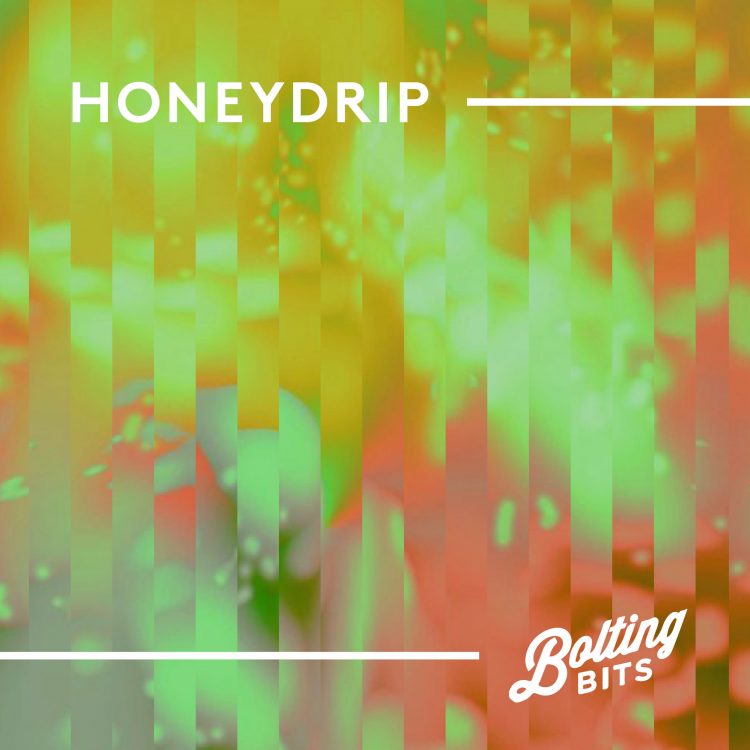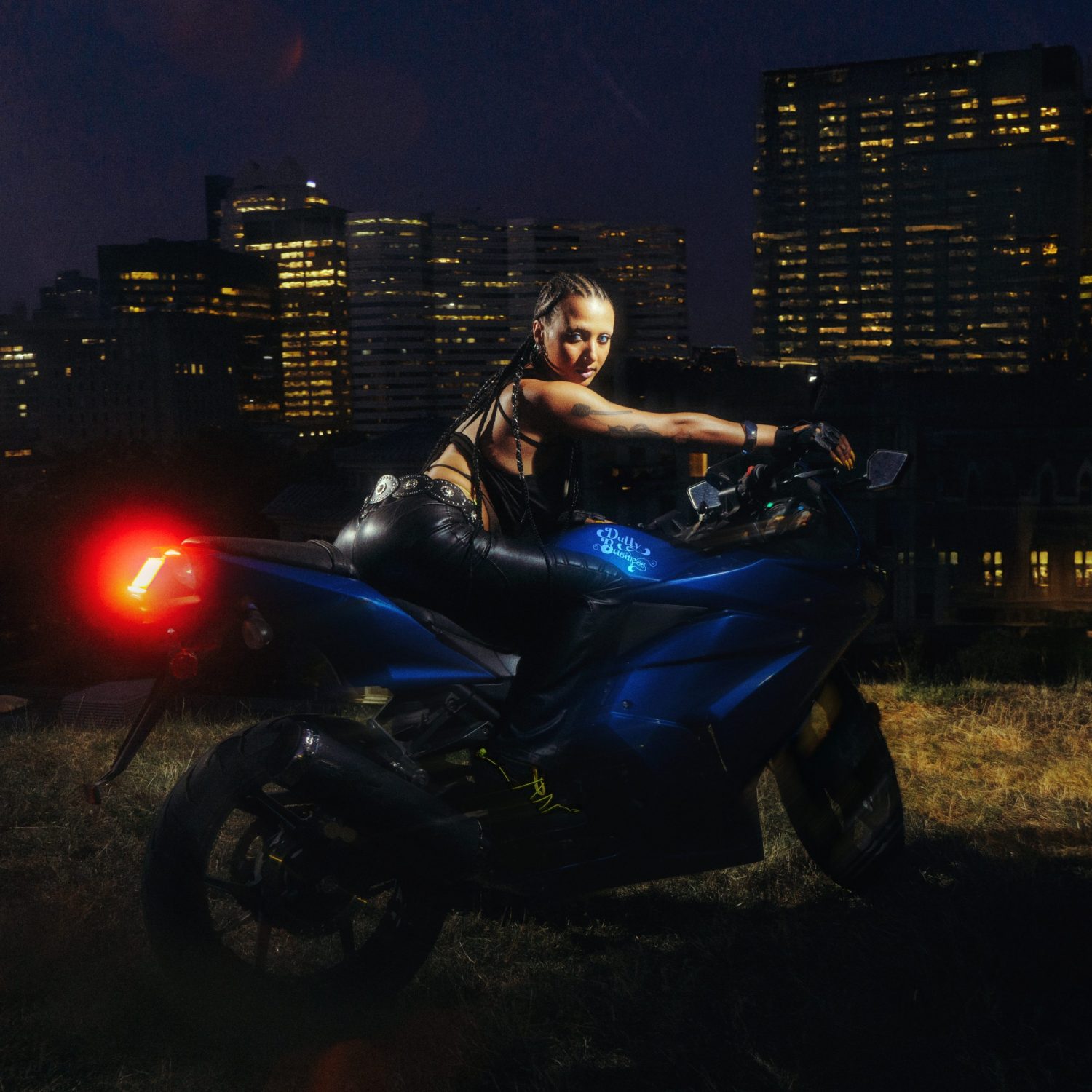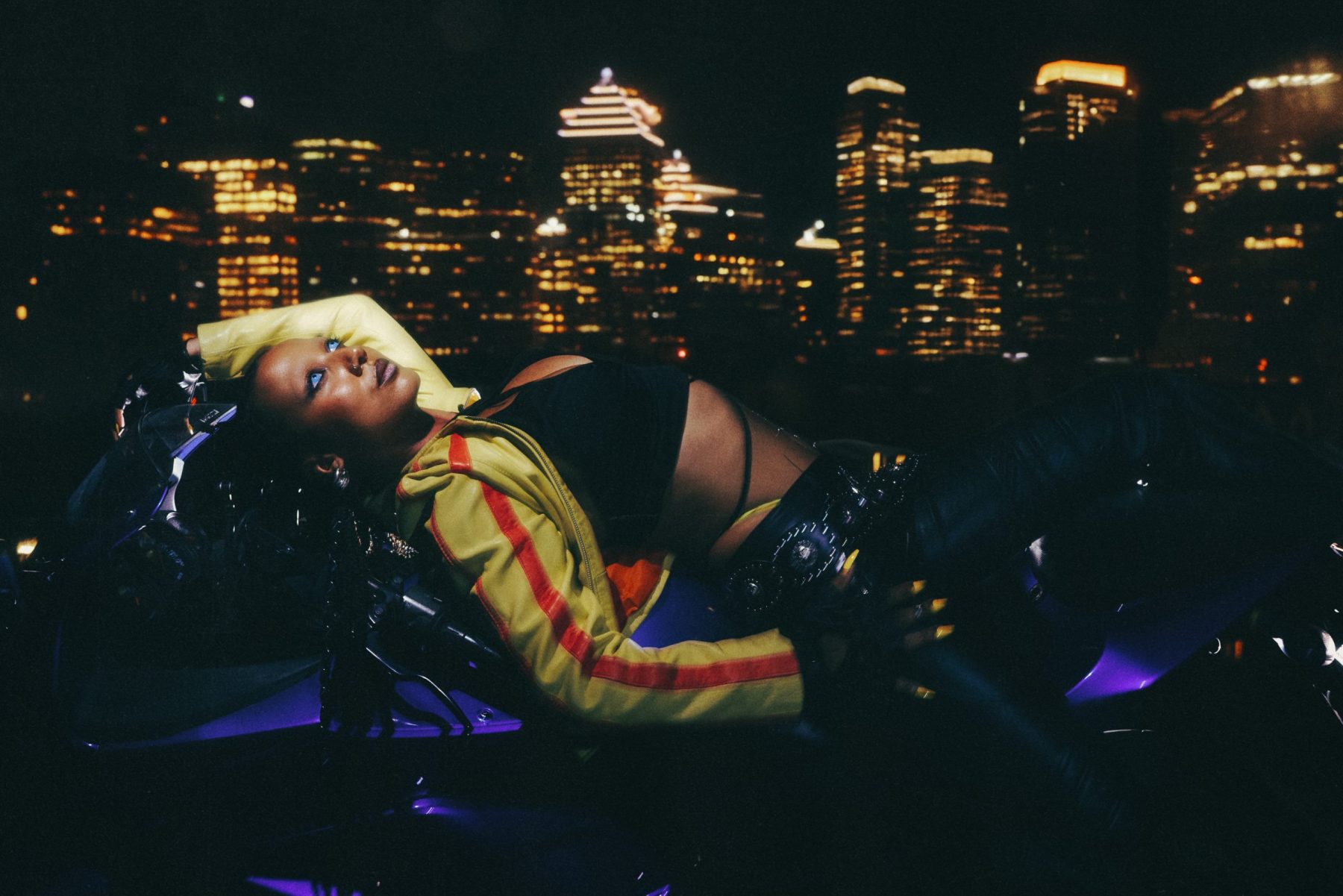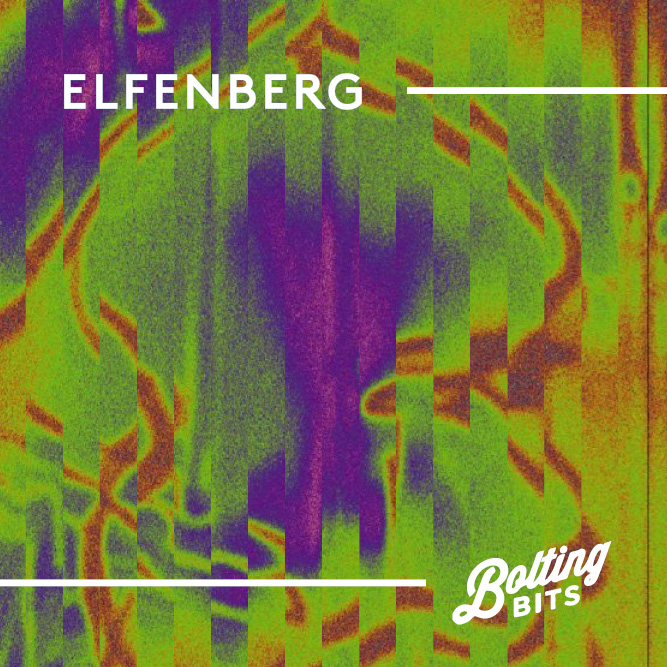
For over a decade, Honeydrip has been one of Montreal’s most vital underground forces — a producer, DJ, live artist and speaker builder whose work sits at the crossroads of bass pressure, dub heritage and forward-thinking club music. Rooted in sound-system culture and informed by electroacoustic practice, she designs music that feels as physical as it does emotional: sub-weighted, textural, intentional. Beyond her own releases, Honeydrip has become a pillar of empowerment within the scene, co-founding MORPH Soundsystem, a queer and femme-led collective reclaiming technical spaces through hands-on education, DIY collaboration and community care.
In 2025, Honeydrip entered a new chapter. Her single “Dutty Business”, created with PYNE and Ultima Esuna during the PHI North residency, marked her first vocal performance — a shimmering, breakbeat-laced offering that blends summer heat with witchy atmospheres, pairing bass discipline with melodic freedom. The track revealed a new layer of her artistry, one that moves effortlessly between sound-system rigor and pop-sensory intimacy.
For MIXED BY, Honeydrip delivers a mix that embodies this duality: deep, hybrid, humid, unbound — shaped by dub lineage, contemporary club mutations, and the collective energy that drives her work on and off the stage. This mix isn’t just a set, it’s a statement: a Montreal transmission tuned to low frequencies, radical community, and the future of sound.
INTERVIEW

You’ve been part of Montreal’s underground for about a decade — can you describe the arc of your practice from those early raves to where you are now as a producer, performer and speaker-builder?
I think I’ve always been chasing growth, personally and artistically, and those two things are completely intertwined for me. Loving music led me to DJing, DJing led me to producing, and producing eventually made me want to understand sound on a deeper, physical level. That’s when I started building speakers. And now speaker-building is opening up whole new trajectories that are still brewing. It feels like a continuous chain reaction, where each curiosity leads me into the next chapter.
Your work sits squarely at the intersection of dub/reggae/dancehall tradition and experimental electronic music. How do you balance reverence for sound-system roots with the urge to experiment and hybridize textures? Can you give a concrete example from your production process? (prompt for gear, samples, or a moment when genre boundaries collapsed in the studio…)
I grew up with sound-system sonorities around me, so the rhythms and the spirit of that culture just live in my body. At the same time, I’m shaped by lots of other sonic worlds, and I try to stay honest about all those influences and let them show up however they want to. I really see art as a channel, something we tap into, so in the studio I try not to over-control the outcome. I lock into whatever my intuition is saying in the moment.
My process almost always starts with a bassline, and everything else grows around that foundation. I love dubbing out sounds with reverb and echo, letting them stretch and fall apart. Lately I’ve been trying to bring more of my live-set instincts into my production: on stage I often have these magical moments where I dub stems into something unrecognizable, and I’m realizing that approach could be a powerful tool in the studio too.
You studied electroacoustics and you also physically build speakers — how does that technical knowledge shape your composition and your approach to playing live or on a sound system? Do you design tracks with certain speaker responses or frequencies in mind?
I still feel very much in a learning phase. I am developing my ears both as someone who mixes music and as someone learning to tune sound systems. The biggest thing I’ve learned so far is the importance of space, letting each sound breathe in its own frequency band, not overcrowding the spectrum. Understanding speakers has made me think more intentionally about how a track will actually live on a system.
MORPH Soundsystem is gaining attention as a queer, femme-led collective that reclaims technical space. What was the founding impulse for MORPH, and what have been the most surprising or meaningful outcomes so far (from workshops to repaired subs)? (measurable wins and long-term visions—fundraising, training pathway, etc.)
The founding of MORPH was kind of accidental. I built my subwoofers in 2023 thinking a crew would naturally form around them, because in Jamaican sound-system culture, these collectives often come together almost organically. But when the subs broke into pieces (literally), I looked around and realized I was a one-woman crew. I made an Instagram post saying I wanted to build community and share what I’d learned, and it sort of blew up. People assumed I was hosting workshops, so I realized there was a real need. We held our first event, and from there the collective just came together.
Last month we put together a huge fundraiser and it was our first time all collaborating on something that size. It was a success and I’m so proud of what we pulled off. And we just received Canada Arts Council funding for a big project, so stay tuned for 2026.
You’ve toured across Europe, the UK, South America and Canada — how do audiences and spaces change the way you perform? Do you alter sets when you’re playing club systems vs. a dedicated DIY sound-system setup? Any memorable cross-cultural moments?
I’ve never been someone who likes to plan sets too much… though I’m starting to question that because it seems like most DJs do. However in the past, I’d usually just show up and respond instinctively: how songs are sounding on that system, what the crowd is feeling, what mood I’m in. My Libra side usually keeps that balance pretty well. :)
Collaboration is clearly central to your recent output — the PHI North residency brings up Dutty Business, a track you co-wrote with PYNE and Ultima Esuna. Walk us through how that track came together during the residency. What was the role of each collaborator, and how did the residency context shape the song? (rituals or constraints in the residency that helped creativity, etc..)
I was doing a tutorial on my Ableton Push and came up with the synth melody. Ultima Esuna walked in and I was like, “let’s make a beat together.” We made the early version of Dutty Business, and I freestyled on it. Like I said, I don’t try to control the moment too much, I just honor whatever comes out. At first it had this Bonnie-and-Clyde R&B energy that didn’t quite feel like me. Alanna helped me rework the lyrics and shape my phrasing, and then Ultima Esuna and I rebuilt the track into something that feels much more like the Honeyverse.
I probably wouldn’t have put my voice on a track for years, if ever, without this residency. But since the whole point was skill-exchange between Alanna and me, it felt right to share what came out of that process.
Dutty Business marks your first vocal performance — why now? How did you approach vocal arrangement, melodic/harmonic choices, and the decision to place vocals in the foreground of a project rooted in bass culture?
I have been singing and performing since I was very young. I was even in a few girl groups haha but I ended up giving up on singing. I have also always loved working with vocalists, especially in the Reggae, Dub, and Dancehall genres. There’s a line in The Artist’s Way that
stuck with me. It It says we often surround ourselves with the kind of artists we secretly want to be. I think that happened to me. I kept working with vocalists, maybe ignoring that I wanted to be one too.
Sonically, Dutty Business has been described as balancing shimmering, witch-y textures with crisp breakbeats and a breezy, summer-anthem feel. Which artists, records or production techniques informed the tonal palette for this single? Did you deliberately reference contemporary names (Nia Archives / Pink Pantheress were cited in press) or were those comparisons emergent from listeners?
The song wasn’t trying to be anything specific but after it was made I noticed its similarities with Nia Archives and Pink Pantheress. Mostly because it’s female vocals on a breaky dubwise tune. I’m curious what people hear in it. To me, it also echoes elements of my track System with Shanique Marie.

Your album Psychotropical and recent edits show a willingness to pull in live instrumentation and vocalists (e.g., King Shadrock, Shanique Marie). How do you decide when to bring live musicians into the recording process versus keeping things purely produced/electronic? Any anecdotes about arranging for live players?
I have a bit of an unusual workflow with vocalists, I record them and let them go wild with minimal guidance because I trust their artistry and that is why I chose them. Then I take everything home, chop it up, rearrange it into a new flow, and send it back for approval. I think that method partly came from insecurity about not being fast enough in the studio while someone’s watching. But I’m gaining confidence and I’m excited to start building songs more collaboratively in real time.
You place importance on knowledge sharing (workshops for women & LGBTQ+), and on reclaiming the studio/tech space. What concrete advice do you give newcomers who want to get involved in sound-system culture but feel intimidated by the technical side? What are the first three things they should learn or do?
1. Learn the basics of sound — especially frequencies.
2. Understand signal flow.
3. Pick a specific speaker model, read the forums, and study exactly how it’s built.
Looking at the Montreal scene: what’s exciting you right now (artists, venues, collectives)? Conversely, what structural or cultural changes would you like to see locally or globally in how electronic music scenes are run? (good place to ask about sustainability, mental health, accessibility and inclusion.)
I’m really excited about Parquette. It’s a space built for the people and by the people, after years of listening to what Montreal’s nightlife community actually needed.
And I’m noticing more big artists talking about turning inward with touring becoming unsustainable and local scenes needing more attention. I’m curious what it will mean to headline in a city like Montreal if fewer touring acts come through and if you don’t have to “make it” internationally to be seen as a headliner at home.
For the MIXED BY mix you’re delivering for Bolting Bits, what’s the framing or story you want the listener to experience? Will you champion unreleased material, dub skanks, edits, or new live-to-tape elements? Any tracks or moments you’re determined to include?
I have been thinking a lot about the ebbs and flows of being an artist, especially as winter is starting. I think that is represented in my mix via the volatility of pace, rhythm, and the surprises. It mirrors the waves of an artists path.
I was determined to put my Dutty Business Club Edit in there, which I did. With the remix release there is also a great remix by Anna Morgan that I wanted to add but I decided to not put my track twice in one mix aha.
Dutty Business is now available on bandcamp.



